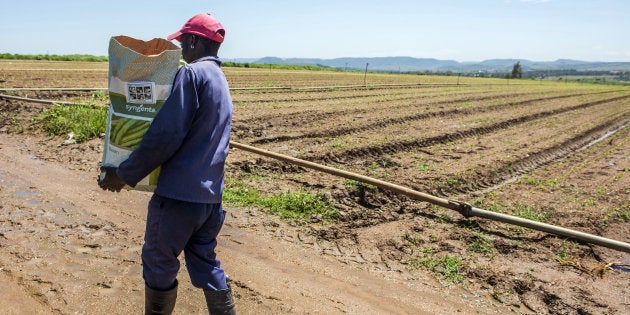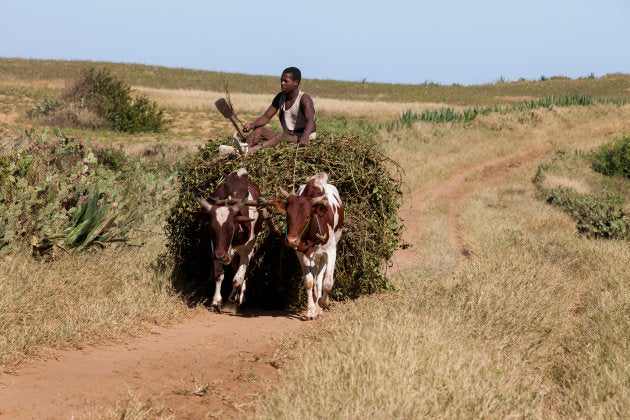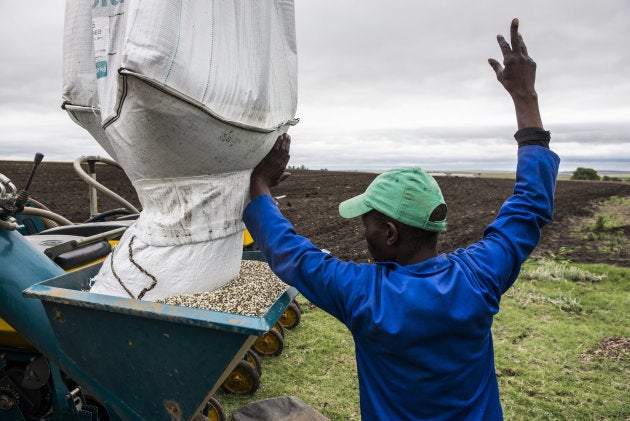
I recall my varsity days. My study mates and I had what was dubbed "a simple but ineffective" studying method. Nonetheless, we got the desired result -- a pass, with distinction sometimes. We would go study chemistry and/or physics from 10am until 8pm, and our rule of thumb was: One Hour -- One Problem.
The method bought us time in finding the correct and simple solutions, but the resources were misused, and this turned those who wanted to join our study group against that course. Apparently, we were playful, arrogant and did not respect time.
This fond memory was triggered by the recent policy adopted by minister of rural development and land reform Gugile Nkwinti's department -- One Household – One Hectare. The programme allocates a one-hectare portion to every household in need. Those plots are to be surveyed by the surveyor-general, after which land-use plans have to be formulated, and title deeds allocated to each household.
The overall objective is to promote household consumption and organise the producers into cooperatives, to be linked to the department's agri-parks initiative. This is an interesting fit, to say the least.
However, there are similar programmes that have sought to fast-track land reform, with no success rate to show for their efforts. Among those are the Farm Share Equity Schemes and Witzenberg Pals framework.
The two failed to address the land issue. This raises questions about the new policy: about the principles guiding this reform, the exit strategy, to whom the benefits will accrue, and the marketing plan associated with it.

Nonetheless, the programme stands a chance of succeeding, if the following are taken into account:
- To see to the realisation of such a project, farmers should follow the route demonstrated by Grain SA of belonging to a study group where the administration will take effect. Study groups are the first entry of new-era farmers. This will allow the development coordinators to have regular access to the beneficiaries, to keep track of farming aspects such as production, marketing and management. The very same study groups can serve as the platform to identify farmers for advanced farmer programmes and recapitalisation, and to notify farmers about training courses and the like.
- Prioritise the understanding of the skills and aspirations of such farmers, before they can be allocated larger farms. In this way, the programme can serve as a selection criterion and a motivation to efficiently allocate resources to the target group. The truth is that as farmers become more advanced, they express the need for more advanced information, while at the same time, progressive farmers assist the less advanced farmers to progress. Servicing farmers in a group is more cost effective than servicing them on an individual basis.

We should clearly define what we want to achieve with this policy
- If it is to put a large number of families on land to provide food for themselves and sell excess production, we should realise that the public sector needs to support them indefinitely, to maximise their chances of surviving sustainably and independently. Examples of such approaches are evident all over -- from both the developing and developed world.
- If the objective is to provide a springboard for small farmers to become self-sufficient commercial farmers, then we should be honest with ourselves, and admit that one hectare per household will not do the trick. It is not nearly an economically viable production unit, and we will also not be able to assist the same number of farmers in one go.
- Commercial farming is a highly specialised enterprise and a capital intensive business with a lot of pitfalls. The success rate of even white entrant farmers in South Africa is very low, even if they have grown up on a farm and learned first-hand from their fathers.
- All over the world, farmers are becoming fewer in numbers and larger in scale, purely because of the economies-of-scale principles in play. We should recognise this in our search for a viable solution, and not ignore such realities.
At the end of the day, the success of the programme lies in the sustainable optimal production of profitable crops on every hectare, and not on the total number of hectares planted, or the total number of tons harvested.
Having said that, this programme will not succeed if it is not a community-needs-based project. For it to succeed, the factor of human development should not be ignored, as it leads to sustainable development.
In the past, programmes such as CASP and Ilima/Letsema have lacked the aspect that is crucially important to development, transformation and successful growth, and that is the human element. Instead, attempts to encourage development have prioritised investment in infrastructure, production inputs and mechanisation support.
This brings me to the conclusion that with one hectare of land, the programme can look to reach economies of efficiency, because the current communal land-tenure system does not allow for economies of scale. This simply means that even though farmers do not have commercially sized land, they can still attain a commercial yield on the land they do have available.
Conversely, the said reality is that farmers may have to focus on commodities that they have a comparative advantage on, especially if they target communities in close proximity as their target market. This suggests that some will have to forgo maize production in order to offset a local glut of maize (which drop maize prices far below the SAFEX-derived price), and focus for example on vegetable production or other cash crops. This will promote local food economies.
Again, the project can stand the test of time if farmers are empowered to farm for themselves and own equipment, and not rely on other service providers -- that route has a proven track record of delaying production activities, because of their lack of knowledge about the sector.
All farmers can be assisted to use the most modern methods of crop production on the land that is available to them, as Grain SA does with its Farmer Development Programme. At the end of the day, the success of the programme lies in the sustainable optimal production of profitable crops on every hectare, and not on the total number of hectares planted, or the total number of tons harvested.
Furthermore,
For this policy to come to fruition, we need to clearly define its objectives and shy away from trying to cater for semi-subsistence farmers and small to medium commercial farmers within the same solution, as this has proved to be setting up a huge chunk for failure.
Segregating the farmers is an option. Moreover, we should count the number of success stories, rather than the number of people in a scheme/project. And lastly, government should realise that any smallholder scheme will need continuous support from government throughout, and that only supporting the startup cost will not suffice.
The only way this policy can come to fruition, is if government and the private sector join hands and really work closely together. For this to happen, we should first address the current lack of trust between the state and the private sector.
With that said, the moment we choose to shoot down, instead of offering sound strategies in response to government policies, is the very moment we become part of the problem.
